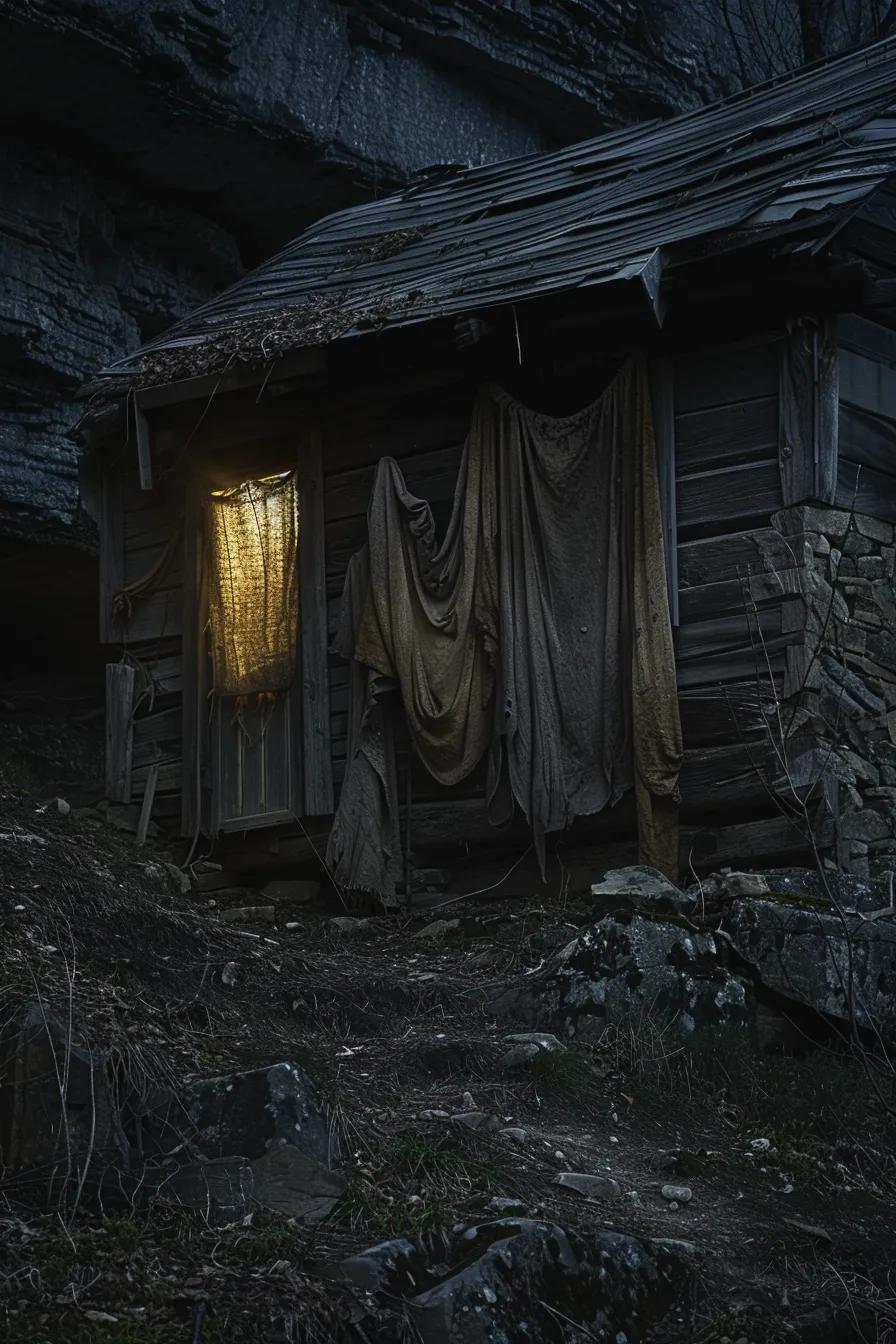
feral people living in extreme conditions, university research departments, wild man

Feral People Sightings in America: Truth or Myth?
The phenomenon of feral people sightings in America has intrigued adventure travelers, folklorists, and indigenous rights activists for decades. Many accounts describe individuals living in extreme isolation away from modern society, surviving in harsh wilderness conditions, and exhibiting behaviors drastically different from those of urban dwellers. These accounts—ranging from feral children raised without human contact to groups that adapt to deep forest dwellings—evoke questions about human nature, adaptation, and the consequences of prolonged isolation. This article explores the phenomenon through various lenses, including historical contexts, first-hand reports, anthropological theories, and modern scientific interpretations. By examining documented sightings, comparing them with known cases such as the legendary Victor of Aveyron, and analyzing witness accounts from remote regions like Appalachia and the great smoky mountains , we aim to understand whether these sightings represent a fragment of human existence that has slipped away from civilization or are mere myths inflated by folklore and sensational reporting.
in national parks.
The subject is particularly relevant to adventure travelers who venture into America’s national park service regions, where the line between myth and reality can blur dramatically. When hiking trails in remote national parks, one might wonder if the stories shared in local lore could be based on real encounters. These encounters, whether real or fictional, invite us to consider what it means to be human when stripped of societal norms and modern conveniences. Researchers and enthusiasts alike are drawn to these accounts in hopes of understanding a form of existence that rekindles ancient survival skills and highlights human adaptability in extreme conditions.
This article will address crucial questions about who feral people are, the historical and anthropological context of their sightings in America, where these sightings have been reported, and the scientific perspectives explaining such occurrences. Through multiple layers of inquiry—including eyewitness testimonies, documented case studies, and expert analyses—we will examine the characteristics of these feral people, to what extent they represent isolated human survival, and how cultural myths might distort our perception of reality. The upcoming sections are designed to break down this multifaceted subject by following a strict hierarchy of questions and evidence, ensuring that each aspect is rigorously interrogated and connected to the overall narrative.
Transitioning now into the detailed investigation, the first area of focus is defining what feral people are and how such individuals are recognized in various accounts of wild man .
What Are Feral People and How Are They Defined?
Feral people are typically described as individuals who have been isolated from human contact for such an extended period that they adopt behaviors and communication styles markedly different from those of their culturally integrated peers. In many reported cases, these people live in remote wilderness areas and develop primitive means of survival. They often display unusual physical and behavioral traits that set them apart from members of mainstream society, frequently relying on self-taught survival techniques rather than modern technology or social systems. Scholars and eyewitnesses alike have tried to define the feral person, incorporating elements of anthropology, psychology, and folklore to develop a comprehensive profile of such individuals. Feral people living in great smoky mountains national park.
Who Are Considered Feral People or Feral Children?
Feral people are generally those individuals—often children—who have grown up largely without human contact or the influence of typical societal structures. Numerous case studies, including well-documented cases like Victor of Aveyron, illustrate how children raised without regular human socialization exhibit language delays, social awkwardness, and behavioral patterns that strongly resemble animals. In many accounts reported in America, eyewitnesses have encountered adults or teenagers whose lack of social conditioning makes them appear wild in behavior and physical presentation. These cases are usually categorized under”feral children” if the individuals are very young, or”feral adults” if they continue to live apart from societal influences into adulthood. Such individuals may not always be criminals or danger to society; sometimes, they are simply victims of isolation whose lives have taken an href=”https://exploretraveler.com/feral-people-living-in-national-parks/”> wild man .
What Behaviors and Characteristics Are Common Among Feral People?
Witness accounts note several consistent behavioral patterns among those deemed feral. These characteristics often include a heightened sense of alertness accompanied by an unusual reliance on sensory perception—sight, sound, and sometimes smell—in ways that mimic animal behavior. Feral people may exhibit minimal spoken language, preferring non-verbal communication or simplistic sounds, and show limited social skills. Their daily routines often revolve around scavenging, hunting, or utilizing natural resources with a striking efficiency developed over years in self-imposed isolation. Additionally, physical attributes such as unkempt hair, muscular builds, and a rugged appearance are frequently mentioned, suggesting that living without proper nutrition or hygiene routines dramatically reshapes even human physiology. feral people
How Do Feral People Relate to Terms Like Wild People and Uncontacted Humans?
The concept of feral people overlaps with several related terms such as wild people and uncontacted humans. While “wild people” might carry a pejorative connotation implying savagery, the term “feral” explicitly denotes the reversion to a state that is uncivilized due to prolonged absence from societal norms. Uncontacted humans, on the other hand, refer to isolated tribes or populations living in remote areas—often shielded by government protection—that retain traditional lifestyles but nonetheless remain in active cultural exchange among their own groups. In contrast, feral people usually represent individuals who have lost contact with any structured society, making them the archetypal examples of human rewilding. This distinction is key: while uncontacted tribes maintain a cultural identity, feral people are defined by their disconnection from any such collective narrative.
What Is the Historical Context of Feral People Sightings in America?

Historical records and local folklore in America offer numerous accounts of individuals living on the fringes of society—often in the dense forests or remote mountainous regions. These stories date back to the early days of European settlement, when frontier life was harsh and isolation was common. Early explorers, trappers, and settlers frequently reported encounters with wild men or reclusive figures who had seemingly abandoned societal norms. Over time, these accounts have grown into legendary narratives, blending factual incidents with mythic embellishments. Understanding the historical context of these sightings reveals how socio-economic factors, such as migration, war, and cultural dislocation, have contributed to the emergence of such characters in American folklore.
Who Are the Most Famous Feral People in History?
Historical accounts have immortalized several individuals as archetypes of the feral person. One of the most renowned examples is the case of Victor of Aveyron, a purported feral child discovered in rural France in the late eighteenth century, whose life later became the subject of extensive medical and psychological study. In America, various local legends recount the appearances of wild men in regions like the wild man , where isolated figures were seen surviving off the land under extraordinarily primitive conditions. Although these figures are rarely confirmed by modern forensic methods, their stories continue to captivate public imagination and serve both as cautionary tales and as symbols of untamed human potential.
What Are the Historical Accounts of Feral Children in the USA?
American history is replete with accounts of feral children who were purportedly raised outside the bounds of conventional society. These stories often involve children purportedly abandoned in the wilderness, subsequently discovered by local communities, only to exhibit behaviors and developmental delays dramatically different from their urban counterparts. Many of these accounts come from the nineteenth and early twentieth centuries, a time when communication between remote communities was sparse and procedural documentation of such encounters was minimal. Yet, eyewitness reports, obscure newspaper articles, and oral traditions have preserved these narratives. Although modern experts sometimes dispute their veracity, these accounts remain a crucial part of the folklore surrounding href=”https://exploretraveler.com/feral-people-living-in-national-parks/”> wild man in the USA, inviting further investigation and comparative analysis.
What Theories Explain the Origins of Feral People?
Scholars and theorists offer a range of explanations for the existence of feral people, blending psychological, socio-cultural, and biological perspectives. One prevalent theory is that feral behavior results from the absence of early human interaction during the critical phases of neurological development. This deprivation can lead to irrevocable changes in cognitive, linguistic, and social functions. Another theory posits that extreme isolation forces individuals to adapt to their environments in fundamentally different ways, prioritizing survival instincts over sociocultural norms. Some anthropologists believe that feral behavior is an expression of reversion to a more primitive state of human evolution, highlighting latent capacities that modern society has long suppressed. These theories not only illuminate the potential origins of feral individuals but also underscore the complex interplay between nature and nurture in human development.
Where Have Feral People Sightings Been Reported in America?
Reports of feral people sightings have been documented in various parts of America, especially in densely forested or mountainous regions where isolation and wild terrain provide a natural backdrop for such phenomena. These sightings have been reported in areas with long-standing local legends and historical accounts, suggesting that the myth of the wild human is interwoven into the fabric of American frontier history. Whether these sightings are the result of true isolation or misinterpretation of local wildlife remains a subject of debate, yet they persist as intriguing elements of cultural lore.
Which States and Regions Have the Most Reported Sightings?
An analysis of reported sightings reveals that regions such as the Appalachian Mountains, the forests of the Pacific Northwest, and the swamps of the southeastern United States are the hotspots for feral people reports. In Appalachia especially, where the rugged terrain and sparse population density create an environment conducive to isolation, multiple accounts have surfaced over the years. National Park Service records and local legends from this area frequently mention elusive, wild figures who appear suddenly and vanish just as quickly. Similarly, the deep redwood forests of California and the expansive pine woods of Florida have been cited as sites where individuals may choose to live off-grid, further blurring the boundaries between myth and empirical evidence. These regional variations underscore the influence of geographic and ecological factors in shaping the narrative of feral existence.
What Are the Most Common Locations for Feral People Sightings?
The most common locations for sightings are typically in areas where there is minimal modern infrastructure and high natural wilderness. Examples include remote pockets of the Appalachian Mountain range, isolated forested areas adjacent to national parks, and even some undeveloped regions within state parks. Local anecdotes often cite specific landmarks such as abandoned homesteads, dense thickets, or hidden clearings near water sources as common meeting points for any alleged feral individuals. Notably, areas that also attract adventure travelers seeking authentic wilderness experiences, like parts of the national park service sites, become centers of both folklore and genuine inquiry, compelling researchers and storytellers to gather further evidence.
How Reliable Are Witness Accounts of These Sightings?
The reliability of witness accounts regarding feral people sightings is a matter of significant contention among researchers. Many of these reports come from individuals with varying degrees of observational and interpretive skills, which can result in differing levels of accuracy. Environmental factors such as low light, dense foliage, and the natural human tendency to anthropomorphize animal behaviors can further complicate these accounts. Additionally, some sightings are influenced by local legends or prior expectations of encountering the extraordinary. While multiple accounts in the same region might suggest a degree of consistency, the absence of corroborative physical evidence, such as clear photographs or forensic samples, leaves many accounts in the realm of anecdotal evidence. Consequently, while there are numerous documented reports, evaluating them through a scientific lens requires careful scrutiny and an understanding of the limitations inherent in human observation under bigfoot
.
What Scientific and Anthropological Perspectives Explain Feral People Sightings?

Scientific and anthropological perspectives on feral people sightings aim to separate myth from potential reality by applying structured methodologies to the study of human behavior in extreme isolation. Researchers in fields such as psychology, anthropology, and even cryptozoology offer differing interpretations of the data. By analyzing case studies, developmental research on feral people, and anthropological evidence from isolated tribes, modern scholars attempt to reconcile these elusive sightings with known principles of human behavior and adaptation. This multi-disciplinary approach helps illuminate the potential causes and manifestations of feral behavior, setting a foundation for further inquiry into how intense isolation can alter the human condition.
What Does Anthropology Say About Feral Behavior and Isolation?
Anthropologists largely agree that the formative years of human life are critical for the development of language, social behavior, and cognitive functions. The absence of such early interactions during the so-called”critical period” leads to significant deficits in socialization. Evidence from cases like Victor of Aveyron indicates that isolation from human contact drastically impairs the acquisition of language and social skills. Moreover, anthropological studies of uncontacted tribes reveal that while isolation can result in a retention of certain primitive survival skills, it usually also maintains a distinct cultural identity. In contrast, href=”https://exploretraveler.com/feral-people-living-in-national-parks/”> wild man —who often lack even minimal human contact—tend to exhibit behavior that is more akin to wild animals, with heightened reliance on instinctual responses over learned behaviors. This loss of cultural transmission underscores anthropology’s view that prolonged isolation is highly detrimental to the complex cognitive and social systems that define modern humanity.
How Does Cryptozoology Interpret Feral People Sightings?
While cryptozoology is often considered a fringe discipline, its methodologies provide an interesting counterpoint to mainstream scientific analysis. Cryptozoologists view feral people sightings through the lens of the unknown and the unexplained, suggesting that these accounts might represent a form of human existence that has eluded traditional study. They advocate for the possibility that feral individuals, or even communities, might exist in a quasi-mythical state, serving as living relics of a pre-modern human condition. Cryptozoological research often emphasizes the consistency of sightings in specific regions, arguing that repeated encounters—despite the lack of hard evidence—point to a genuine phenomenon. While these interpretations remain controversial, they contribute to the broader discussion by highlighting gaps in conventional understanding and emphasizing the need for further field research.
What Role Does Survivalism Play in Understanding Feral People?
Survivalism—the practice and ideology of preparing for self-sufficiency under extreme conditions—provides another framework for examining feral people sightings. Proponents of survivalism often argue that what may appear as feral behavior could, in some cases, be intentional efforts to live off the grid. In the modern era, with increasing concerns over technological dependency and ecological disasters, some individuals actively choose to adopt survivalist lifestyles that mimic the behavior of feral people. These modern survivalists may utilize advanced techniques and modern knowledge to live in isolation, blurring the line between rewilded existence and calculated preparation. The skills they exhibit—stealth, resourcefulness, and adaptability—often mirror those attributed historically to feral individuals, suggesting that the phenomenon might partly be the result of deliberate disconnection from society rather than solely a consequence of abandonment during childhood.
How Can We Distinguish Myth From Reality in Feral People Sightings?
Distinguishing myth from reality when it comes to feral people sightings involves a careful examination of the evidence, the context in which sightings occur, and the corroborative data available from both modern science and historical records. While folklore and urban legends naturally embellish these encounters, systematic analysis requires researchers to parse the verifiable facts from imaginative storytelling. By comparing current reports with documented case studies and historical accounts, one can begin to form a clearer picture of whether these sightings hold any truth or are simply products of collective imagination.
What Are the Most Common Myths About Feral People?
Common myths about feral people often center on sensationalized accounts that exaggerate the degree of savagery involved. Popular culture tends to depict these individuals as primitive, cannibalistic, or violently anti-social, an image far removed from the often more benign reality described by many eyewitnesses. Other myths involve the notion that feral people possess supernatural abilities or that they are remnants of a lost chapter in human evolution. These narratives are frequently fueled by inaccuracies in early case studies and misinterpretations of isolated incidents. By effectively debunking these myths with current feral people anthropology, psychological, and forensic research, a more balanced and realistic understanding of feral behavior can emerge.
How Does Isolation Affect Human Psychology and Behavior?
Isolation has profound effects on human psychology, particularly during the formative years. Studies on feral people demonstrate that a lack of regular social interaction hampers the development of language, empathy, and typical social behavior. Psychological research supports the idea that isolation not only stunts cognitive development, but also induces heightened survival instincts. In modern settings, prolonged isolation can lead to conditions such as depression, anxiety, and even psychosis. Conversely, it may also reveal latent abilities centered around meticulous observation, environmental attunement, and natural problem-solving. The delicate balance between the adverse effects of isolation and the adaptive responses it may engender presents a crucial element for understanding the characteristics associated with wild man sightings.
What Evidence Supports or Refutes the Existence of Feral People in America?
While tangible physical evidence supporting the existence of feral people in America remains scarce, numerous eyewitness accounts and anecdotal records continue to fuel the debate. For instance, detailed interviews, inconsistent local media reports, and oral histories from isolated communities provide a patchwork of data that implies physical encounters may have occurred. Some of this evidence includes unusual footprints, inexplicable markings in remote areas, and cryptic references in local lore that match descriptions from historical accounts. However, skepticism remains high due to the lack of verifiable artifacts, DNA samples, or photographic evidence that unequivocally confirm these sightings. Modern technological tools such as drone surveillance and remote sensing continue to be employed in ongoing research, attempting to bridge the gap between myth and verified reality. Ultimately, while definitive evidence remains elusive, the repeated nature of these reports suggests that further investigation is warranted.
What Are the Most Credible Reports and Case Studies of Feral People Sightings?

Credible reports of feral people sightings are rare but offer intriguing insights into the phenomenon. These reports often come from regions with documented historical accounts, where consistent eyewitness descriptions and corroborative local records contribute to a level of credibility that distinguishes them from mere legends. Analyzing these reports involves comparing modern accounts to classic case studies, such as the famed story of the wild man Victor of Aveyron, which has informed much of the scientific discussion on feral behavior. In the American context, several documented reports from remote areas have been studied by local authorities and folklorists, lending a degree of authenticity to the narratives.
What Can We Learn From the Victor of Aveyron and Similar Cases?
The case of Victor of Aveyron serves as a seminal foundation for understanding feral behavior. Victor, discovered in the late eighteenth century, was found to exhibit significant challenges in language acquisition and socialization, reinforcing the idea that early human contact is critical for normal development. Modern parallels with feral children in less isolated parts of America have shown similar developmental delays and behavioral discrepancies. Such case studies provide evidence that extreme isolation can lead to a reversion to more animalistic habits, emphasizing survival over social interaction. Furthermore, these cases highlight the importance of early rehabilitation and social integration if reintroduction to society is desired. They also underscore the broader implications of what isolation does to the human psyche, contributing invaluable data for both historical analysis and modern forensic psychology.
How Do Modern Sightings Compare to Historical Accounts?
Modern sightings of feral people in America bear intriguing similarities to historical accounts, particularly in shared descriptions of physical appearance and behavior. Both modern and historical reports describe individuals with unkempt hair, animalistic gait, and an apparent reliance on instinctual survival methods. However, modern accounts sometimes include elements of deliberate isolation tied to contemporary survivalist movements, which differ subtly from the uncontested abandonment seen in historical cases. Recent reports have been documented with the aid of digital recording devices and improved communication technologies, lending a level of detail and consistency that was previously unmatched. This continuity, despite advances in technology and societal changes, reinforces the notion that while the underlying causes may vary, the observable effects of extreme social isolation remain remarkably consistent.
What Role Do Government Agencies and Researchers Play in Investigating Sightings?
Government agencies, particularly those responsible for managing national parks and wilderness areas, often receive reports regarding unusual phenomena, including alleged feral people sightings. In many cases, agencies like the National Park Service have protocols for investigating such reports, which involve coordinated efforts between local law enforcement, wildlife experts, and forensic investigators. Researchers, including anthropologists and wildlife biologists, contribute by examining the ecological and behavioral conditions that might encourage such lifestyles. Despite the inherent challenges of verifying such elusive encounters amidst vast wilderness areas, the involvement of these agencies and academic specialists lends essential credibility to the data. Their findings, often published in obscure local journals and occasionally publicized in mainstream media, form a critical component of the cumulative evidence necessary to begin distinguishing myth from reality.
How Can the Public Engage With and Learn More About Feral People Sightings?
The subject of feral people sightings, while often relegated to the realm of folklore and myth, invites public engagement through various modern channels. For those intrigued by the possibility and wishing to either contribute their own accounts or learn more about the historical and scientific context, there are several resources available. From interactive online databases that compile eyewitness reports to community forums where individuals share personal experiences, the opportunity to engage with this subject is greater than ever. This engagement not only enriches public understanding but also fosters a dialogue between amateur researchers, professional scientists, and adventure travelers who frequent href=”https://exploretraveler.com/feral-people-living-in-national-parks/”> wild man .
Where Can You Find Interactive Maps and Databases of Sightings?
Interactive maps and online databases focused on feral people sightings are increasingly available on websites dedicated to unexplained phenomena and local history. These platforms aggregate accounts from across America, allowing interested parties to pinpoint locations of reported sightings. For example, several websites curate data from areas within the Appalachian region and other wilderness areas, including details like date, time, eyewitness descriptions, and even photographs when available. Such resources are invaluable for both amateur enthusiasts and professional researchers alike, providing an accessible database that encourages citizen science and accountability in reporting unusual href=”https://exploretraveler.com/feral-people-living-in-national-parks/”> wild man .
How Can Eyewitnesses Share Their Experiences Safely?
Eyewitnesses who wish to share their experiences regarding feral people sightings can contribute on moderated online forums, social media groups dedicated to mystery sightings, and dedicated research websites. It is advisable for eyewitnesses to include as much detailed information as possible—geographic coordinates, environmental conditions, and descriptions of the observed behaviors—to enhance the credibility of their accounts. Many of these platforms offer anonymous posting options to protect personal privacy while ensuring that valuable data is collected. Additionally, contacting local authorities or
with specific findings can lead to more formal investigations, further validating these accounts. Such methods ensure that the public can contribute to a growing body of knowledge without compromising personal safety or the integrity of the data.
What Expert Interviews and Resources Are Available for Deeper Understanding?
Several universities and research institutions have experts in anthropology, psychology, and wilderness survival who occasionally contribute to the study of isolation phenomena, including feral people sightings. Interviews with these experts, available in academic journals, documentaries, and podcasts, offer in-depth perspectives on the implications of isolation on human development. For instance, documented interviews with researchers who have studied
provide insight into the neurological and psychological effects of extreme isolation. Additionally, local libraries and historical societies often house archival materials and firsthand accounts that offer rich context to the modern narratives. Engaging with these resources through webinars, academic conferences, or online courses can significantly enhance public understanding and foster a more nuanced discussion about the phenomenon.
Frequently Asked Questions
Q: What are feral people sightings in America primarily based on? A: Feral people sightings in America are primarily based on eyewitness accounts from remote wilderness areas, particularly in regions like Appalachia. These accounts describe individuals living in isolation, exhibiting primitive behavior due to long-term detachment from modern society. Although physical evidence is limited, historical accounts and anecdotal evidence suggest a complex interplay between feral people living in national parks and human adaptability.
Q: How do researchers explain the behavior of individuals identified as feral? A: Researchers explain the behavior of feral individuals by examining the effects of prolonged isolation during critical developmental periods. Anthropological studies indicate that a lack of social interaction significantly impairs language acquisition, cognitive development, and social skills. Additionally, survival instincts take precedence in such individuals, leading to behaviors that mimic those observed in wild man . Modern psychological research also concludes that extreme isolation frequently induces adaptive responses that favor stealth and resourcefulness.
Q: Are there any documented cases that support the existence of feral people? A: Yes, while concrete evidence remains scarce, documented cases like that of Victor of Aveyron serve as historical proof of the phenomenon of feral behavior. Modern accounts, though often based on eyewitness testimony, have been reported consistently in regions with high isolation such as Appalachia and remote parts of the Pacific Northwest. These cases are often supported by corroborative local folklore and occasional investigative efforts by government and academic entities. href=”https://exploretraveler.com/feral-people-living-in-national-parks/”> wild man in national parks.
Q: What distinguishes feral people from survivalists in modern America? A: Feral people typically refer to individuals who have grown up in or have been forced by circumstance into isolation without social contact, resulting in significant deviations from normal human behavior. In contrast, modern survivalists intentionally choose to live off the grid, often employing modern techniques and technologies to maintain a self-sufficient lifestyle. While both groups may exhibit similar traits such as resourcefulness and adaptability, the key distinction is that survivalists are usually well-informed and trained, whereas feral people often lack formal social conditioning, like wild man .
Q: How reliable are eyewitness reports of feral human sightings? A: The reliability of eyewitness reports varies significantly due to factors like environmental conditions, the subjective nature of human perception, and the influence of local legends. While many reports come from credible individuals using detailed descriptions, the lack of verifiable physical evidence means that these sightings remain largely anecdotal. Researchers caution that while repeated accounts in similar regions may indicate an underlying phenomenon, without corroborative data such as clear photographs or forensic evidence, the reports can be challenging to authenticate fully.
Q: Can feral people sightings be linked to specific geographical regions in America? A: Yes, many feral people sightings are linked to specific regions in America, with the Appalachian Mountains, the Pacific Northwest, and isolated swamps in the southeastern states frequently cited. These areas offer the environmental conditions that facilitate isolation, such as dense forests and rugged terrain. The local geography, combined with historical patterns of settlement and migration, contributes to a higher frequency of reported sightings in these regions. For more information, visit feral people living in national parks.
Q: What resources are available for those interested in researching feral people sightings further? A: Individuals interested in researching feral people sightings can access interactive databases, online maps, academic journals, and documentaries dedicated to unexplained phenomena. Numerous local historical societies and university research projects also provide detailed archival records and expert interviews on the topic. These resources, combined with moderated online forums where witnesses can safely share their experiences, form a comprehensive network for those keen to explore this mysterious wild man subject further.
Final Thoughts
The phenomenon of feral people sightings in America remains a captivating blend of myth and reality, inviting both skepticism and belief. Through historical accounts, scientific inquiry, and ongoing eyewitness testimonials, the subject continues to challenge our understanding of human nature and survival. For adventure travelers exploring remote regions, these stories enhance the allure of the wilderness by highlighting a hidden side of human existence. Continued research and public engagement may yet uncover more evidence that bridges the gap between folklore and fact, ultimately deepening our insights into human adaptability.
The table above summarizes the regions with notable feral people sightings in America, highlighting common characteristics and potential explanations backed by research. This synthesis of regional data emphasizes how environmental conditions and historical context contribute to the ongoing debate between myth and reality in these mysterious encounters, including the notion of the wild man .
Exploring feral people sightings takes us on an adventure into the deep recesses of both the American wilderness and the human psyche. The interplay between folklore and documented evidence serves as a poignant reminder of nature’s enduring influence on humanity. Whether these sightings represent real individuals or are exaggerated by collective memory, they continue to spark curiosity and wonder, motivating adventurers and scholars alike to probe further into the uncharted territories of the human condition.
For those driven by the thrill of exploration, an encounter—if it ever occurs—could offer a rare glimpse into an alternate way of life, one that is intricately intertwined with the natural world. Ultimately, the mystery of feral people encourages us to question our assumptions about civilization, challenging us to appreciate the delicate balance between social connection and the call of the wild man.


